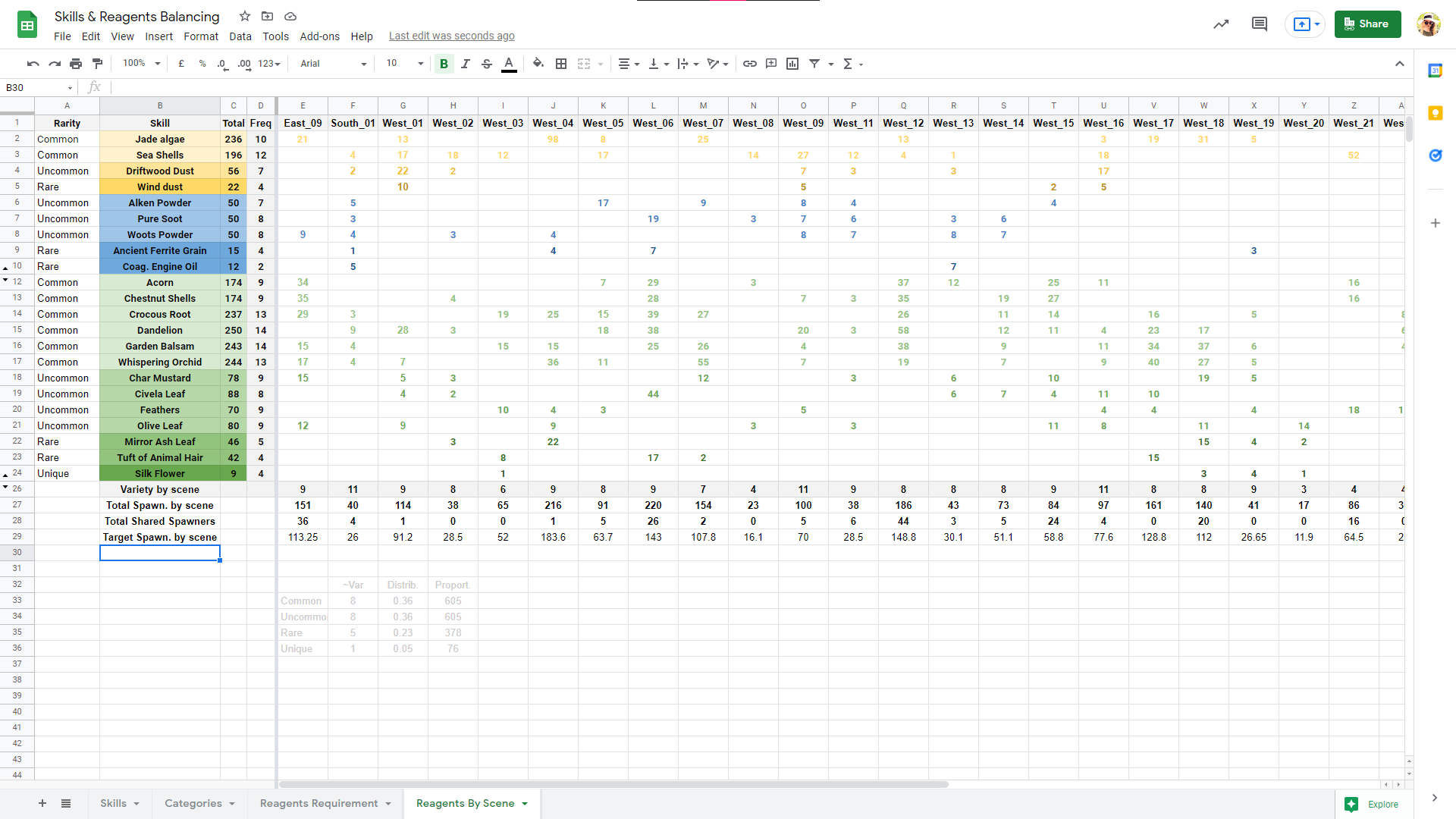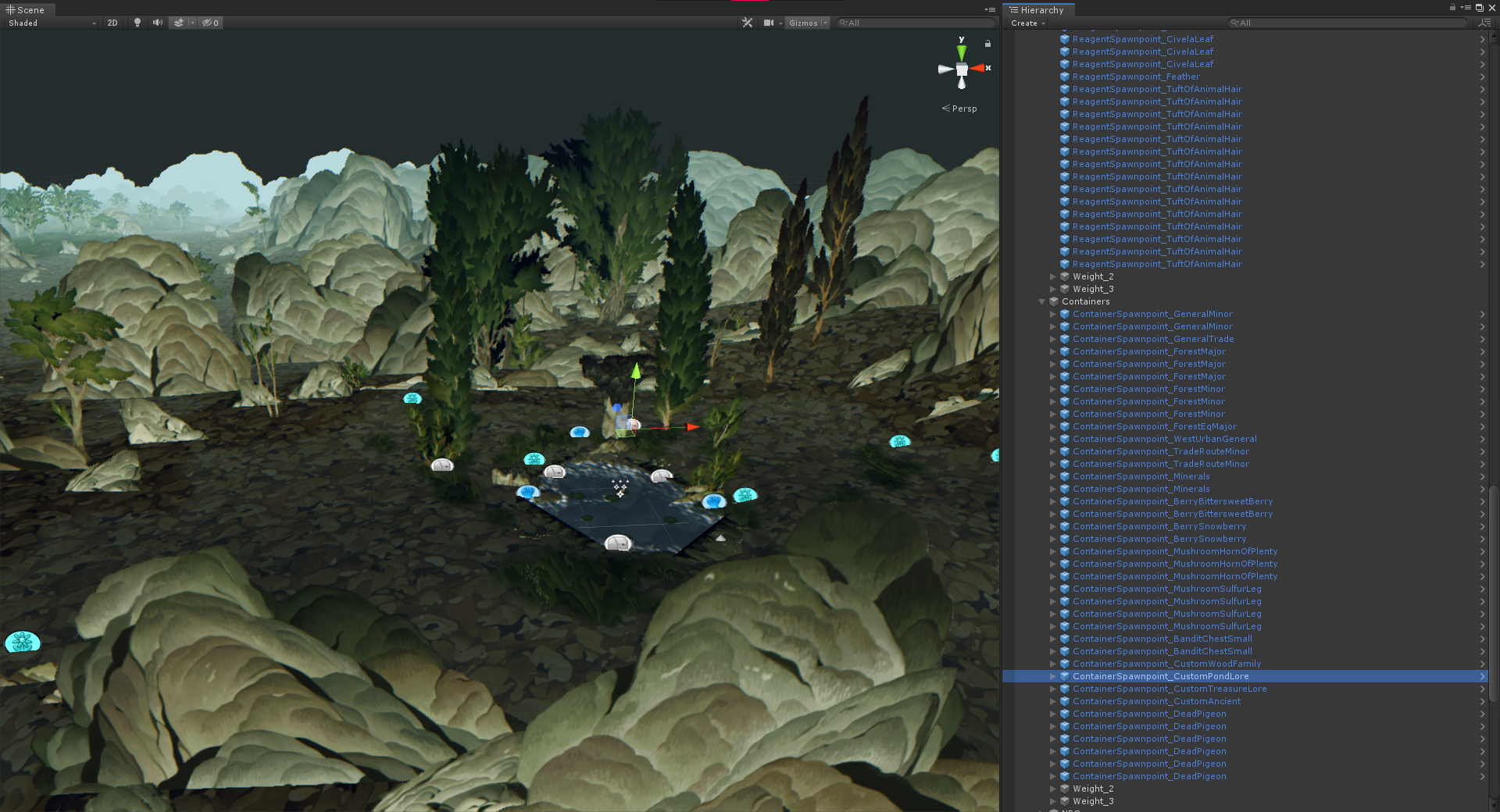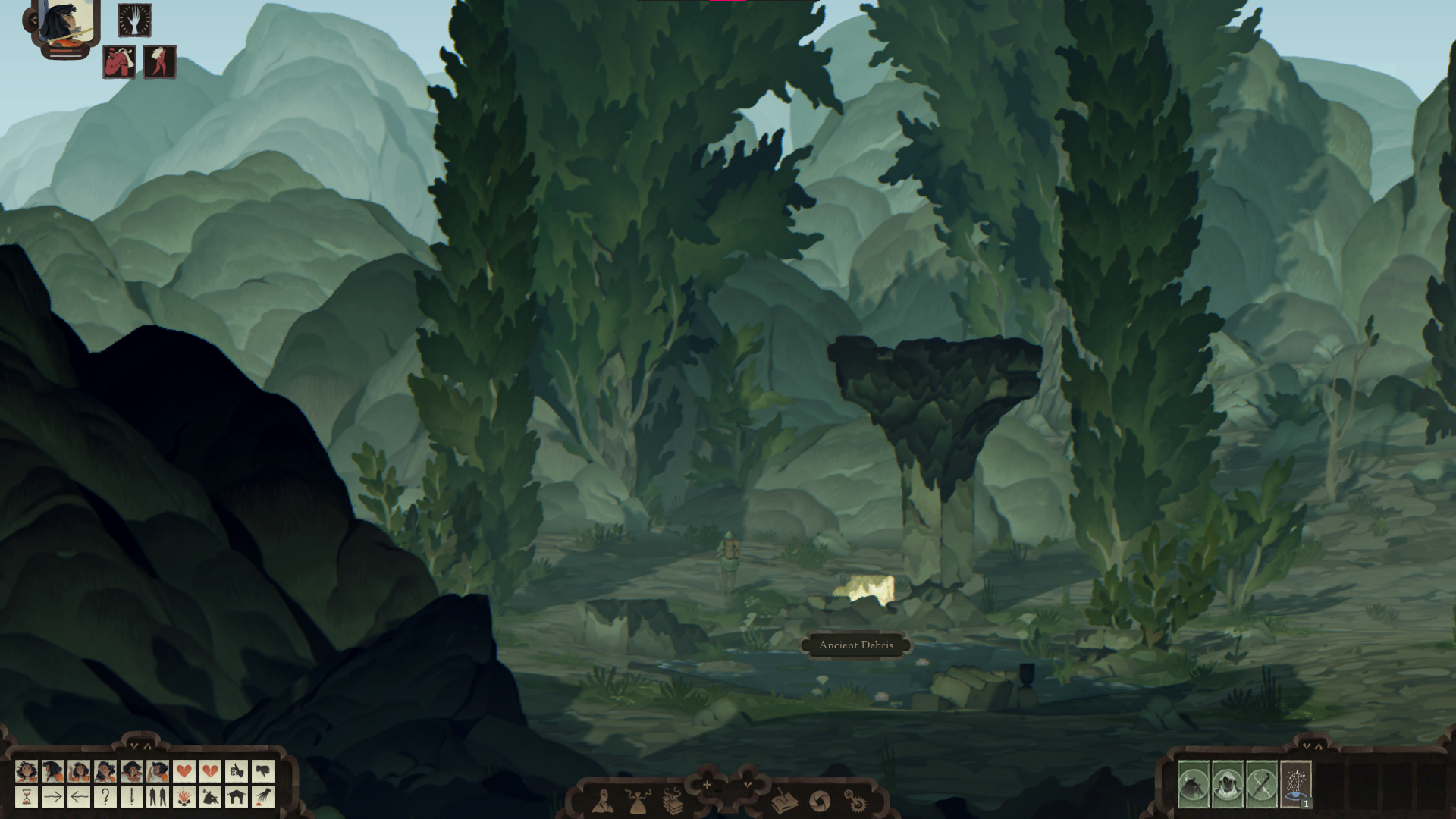Become part of a unique social roleplaying experience that doesn’t hold your hand. Inspired by genre classics, this is a serene TMORPG adventure that sets you adrift in a fairytale world... it’s also an invitation to roleplay without the restraints of linear missions and plotlines.
My responsibilities as game designer were:
- Designing and following up implementation of features with other departments.
- Maintaining the pool of items
- Creating and assisting production of new items and skills
- Implementing and overseeing production of new skills and endeavors
- Balancing various systems and gameplay
- Structuring data visualizations to diagnose content distribution
- Scripting events, quests and behavior trees
- Defining, balancing and contextualizing trading dynamics
- Contextualizing the level design and trading to make the collection loop more meaningful
- Maintaining the pool of items
- Creating and assisting production of new items and skills
- Implementing and overseeing production of new skills and endeavors
- Balancing various systems and gameplay
- Structuring data visualizations to diagnose content distribution
- Scripting events, quests and behavior trees
- Defining, balancing and contextualizing trading dynamics
- Contextualizing the level design and trading to make the collection loop more meaningful
Developed by: Might and Delight, 2021
Platform: PC, Mac, Linux
Tech Environment: Unity, NodeCanvas, Custom tools, SVN, Excel, Photoshop
Platform: PC, Mac, Linux
Tech Environment: Unity, NodeCanvas, Custom tools, SVN, Excel, Photoshop
In Book of Travels you are at liberty to travel the free wilds and vivid cities of the Braided Shore peninsula. Wander deep into the layers of this hand-drawn world, stumble upon its hidden places or unravel one of its many mysteries. There is no overarching goal and no real beginning or end, but for mortal characters, the stakes can be high.
Four main concepts are in play with Book of Travels: wondering, learning, traveling and socializing. These pillars make up the serenity of the game, in which players are surrounded by a mundane whimsicality, constantly being invited to dig deeper and unveil stories about their inhabitants or maybe entrenched mysteries. They drive the need to reach out far and uncover secrets, but resting and preparing for a new journey is not to be overlooked.
As per the socializing aspect, due to the nature of being a TMORPG - Tiny Multiplayer Online RPG - encounters with other players are not to be taken for granted and, because of that, are likely to be more meaningful. After all, a lonesome journey might be colored different under the company of strangers in the same conditions.
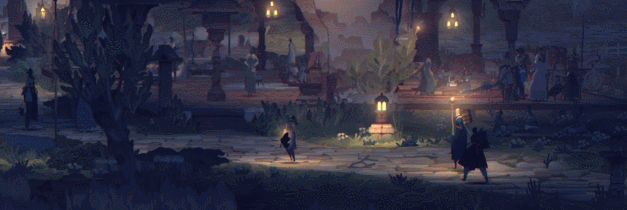
Some design decisions to maintain a positive environment for players in the game include not having PvP, nor being able to trade between players. The communication system is also an important aspect: there is no direct communication, but rather an emote and symbols-based language players can use to express concepts and emotions. This was inspired by Journey and tested on Might and Delight's early title Meadow. Another system designed to foster social gameplay and collaboration between players is the Endeavor system. When you are close to other players, each one's talents sum up and can be used to access hidden areas, discover precious items, or convince a trader to show better goods.
One of the challenges of Endeavors was to balance the requirements so that there is a smooth progression for players traveling in a group, at the same time as not feeling too gatekeeping for players who decide to travel on their own. To help counter that, endeavors were divided into talents - mechanical, physical, social and spiritual - were added and could boost one of these talents on character creation. For that, I assigned sets of two talents that better match the characteristics of each Form, according to their archetypes, to both serve the gameplay purpose and enhance roleplaying aspects.
Talents can also be increased through skills, consumable vials and equipment, giving opportunities for players traveling alone to complete endeavors or an extra edge for players with the combined strengths of a group.



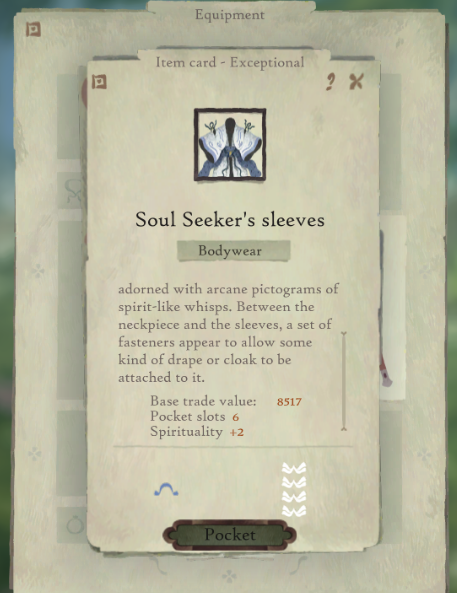
The skill system was also another one I was responsible for. Prior to the time I joined the team, the skill system was left without ownership, so my first step was to diagnose which skills already created were functional, which state of quality they were and how they were distributed between the four Winds (an important aspect on the lore of Book of Travels, that influences characteristic of what and whoever is bound to each Wind). After that, one of the gameplay programmers, tech artist, sound designer and I formed an action plan along with the creative director to address all those points and increase the skills to be shipped.
All of the skills also needed to be balanced and, as I dug into the system, I realized a pretty special aspect about how Book of Travels approaches skills. Despite having a share of skills that do offer objective bonuses and advantages, there are several skills that cater almost exclusively to players' expression, such as skills that call forth a spirit animal to walk alongside you. That called for a different approach on balancing to incentivize a more frequent use of such skills. Skills catering to expression were setup to require fewer slots to memorize, fewer rare reagents and in less quantity to be used, have longer durations and shorter cooldowns in comparison to skills that do offer tangible advantages.
Reagents are also a particular aspect of the skill system: they are similar to mana, from other RPGs, and are required to activate Knot and Tea skills. Each Knot and Tea use either one or two specific types of reagents, that are found everywhere in Braided Shore. It was also my responsibility to distribute them across levels and balance their abundance vs. scarcity and amount given by rarity. To further incentivize non-stingy behavior towards skills, I defined the amount given by each reagent spawner in the inverse proportion as their rarity, meaning rare ones would be hard to find but yield a higher amount.

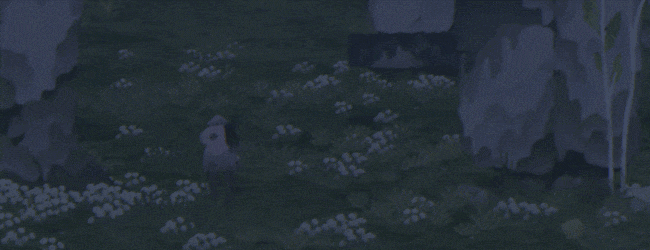
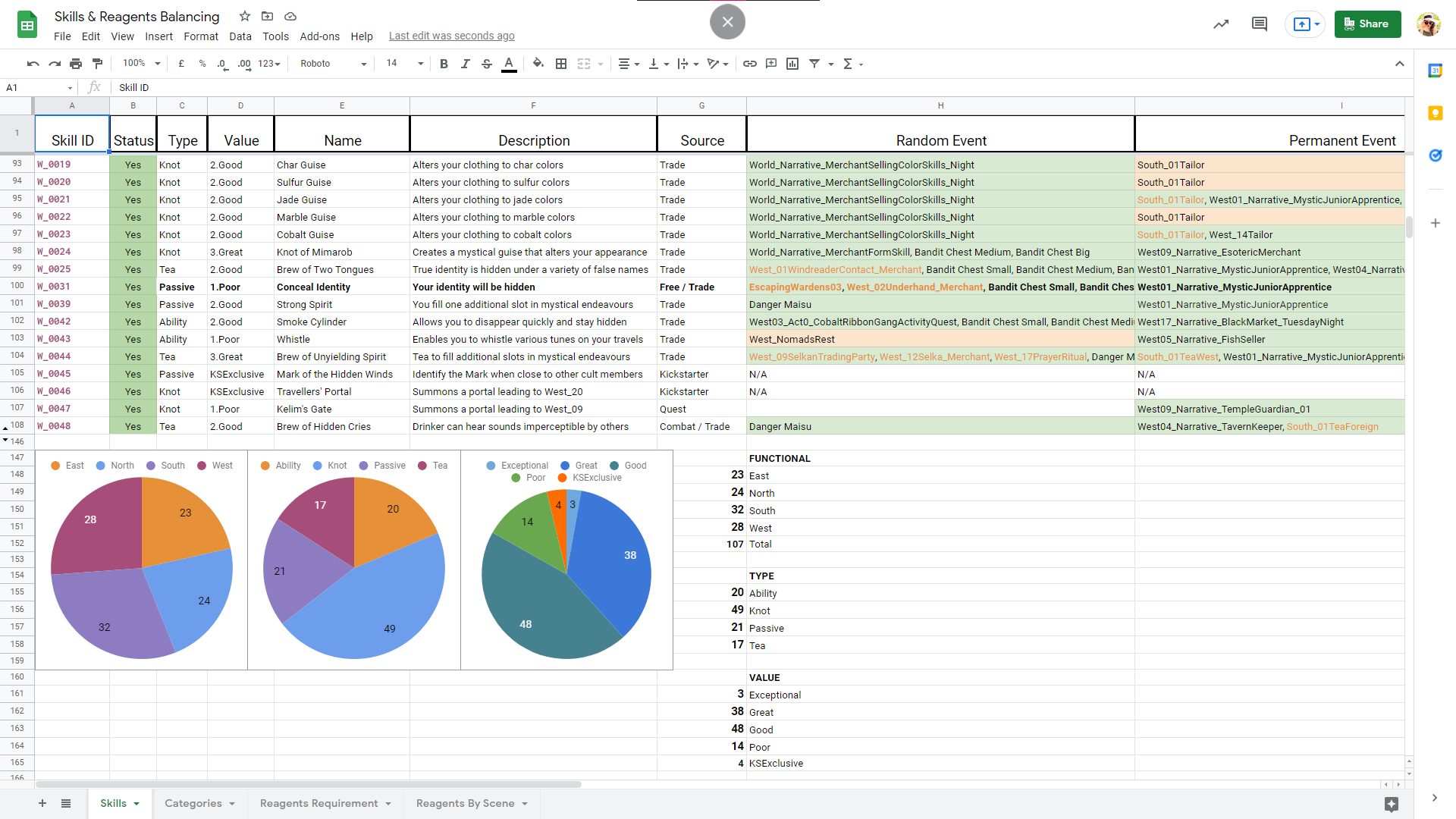
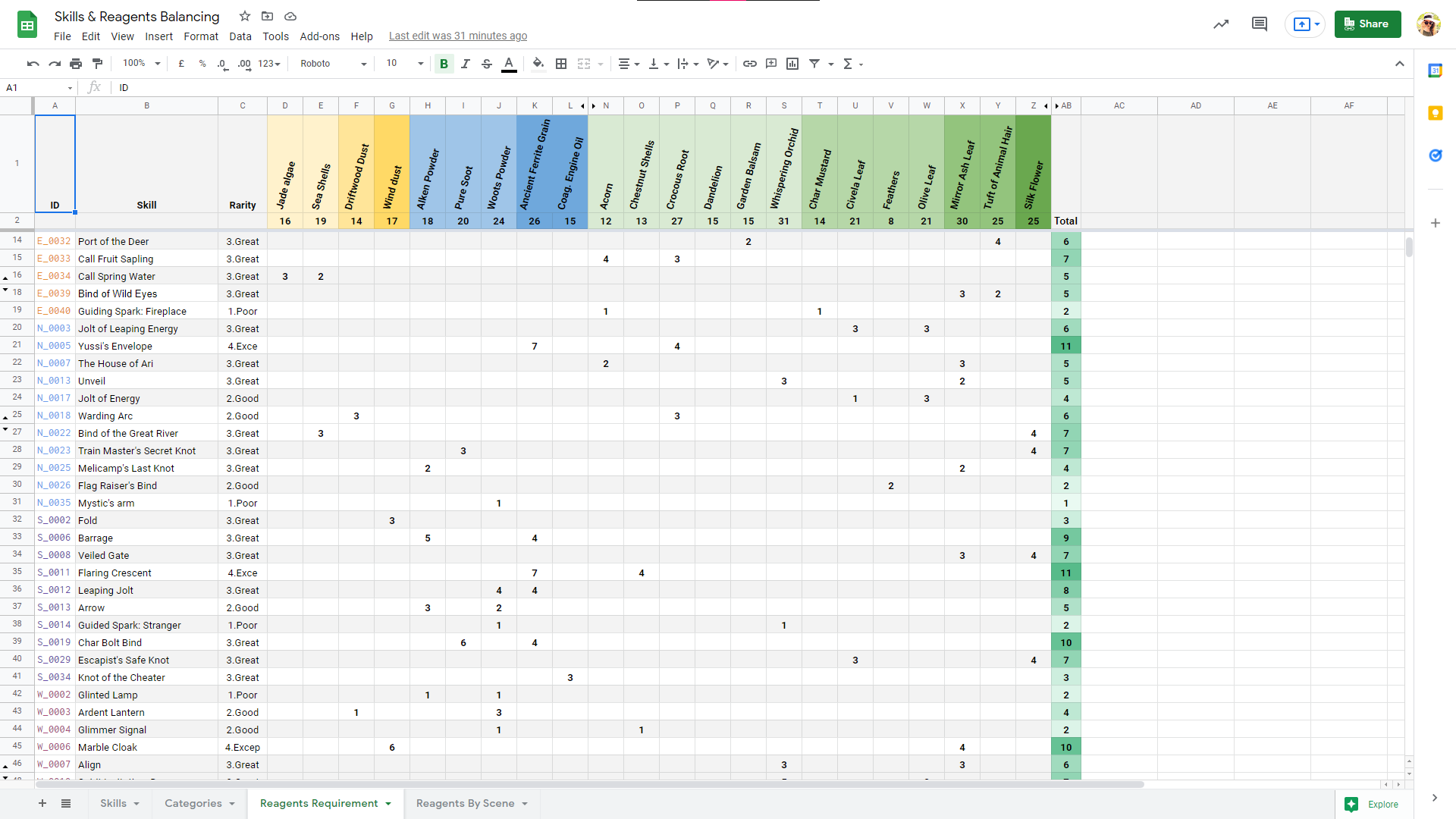
Another big part of the game I had responsibility for was the items ecosystem. It was surely intimidating at first - joining a project some weeks before closed beta and taking ownership of the items system that had a few thousands already created, all of them with immersive names, which is a very interesting aspect but also a challenge to search and have an overview.
My approach to the task of familiarizing myself with the items was identifying that many of them were missing their Origin assignment, which meant they couldn't spawn. So I swept the list fixing the faulty cases and getting a grasp of the naming style, so a matching origin could be assigned to the item's "personality". In no time I was very comfortable among the many items and that knowledge was crucial to assist the 2d artist in charge of making unique icons for them. When they'd ask me what items named like "Crystal shard from the throne of lake vapor", "Unidentified piece from engine 23" or "Malku luxury cheese" would be I would either know straight away, or would have fun times researching references to better define them and even, in some cases, rename them to make everyone's lives easier. That liberty also allowed me to infuse some of my own Brazilian culture into the game, such as an edible of Foreign Origin called "Pleasant cheese buns" as a reference to pão de queijo.
Since items and templates alike are setup inside Unity, it is pretty hard to have an overview of how each template is configured, making it hard to balance their content. To achieve a snapshot view of the loot templates, I listed all their content categorization into a sheet, so I could easily balance how many unique items could be found, their value categories, origins, item types and subtypes. Along with that, I maintained a similar sheet listing which loot could be found at each level and their amounts. On top of that, assigning loot content became way easier when our tools programmer made an items search tool. In the tool I'd fetch a list of all items matching the criteria I wanted to assign, which allowed me to gauge how many other items could compete in the random selection when I wanted to add rare content, granting no loot would be an exploitable source of rare goods.
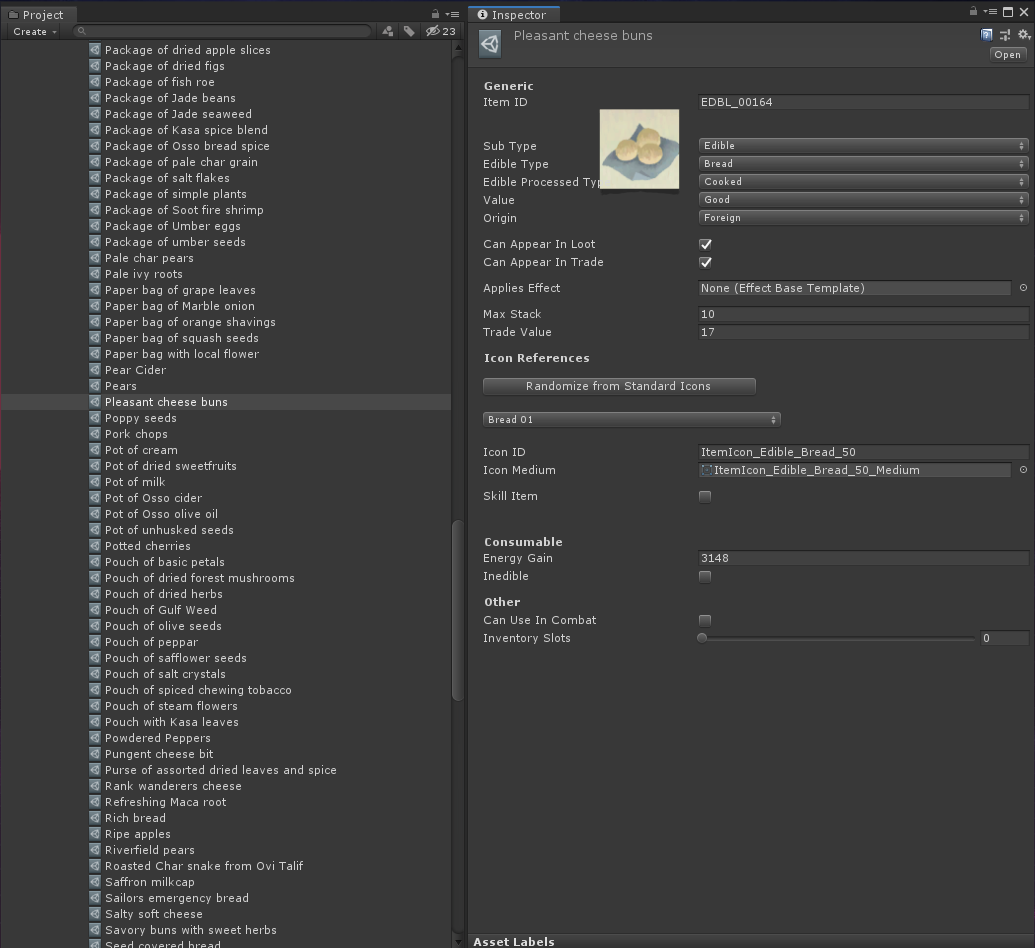
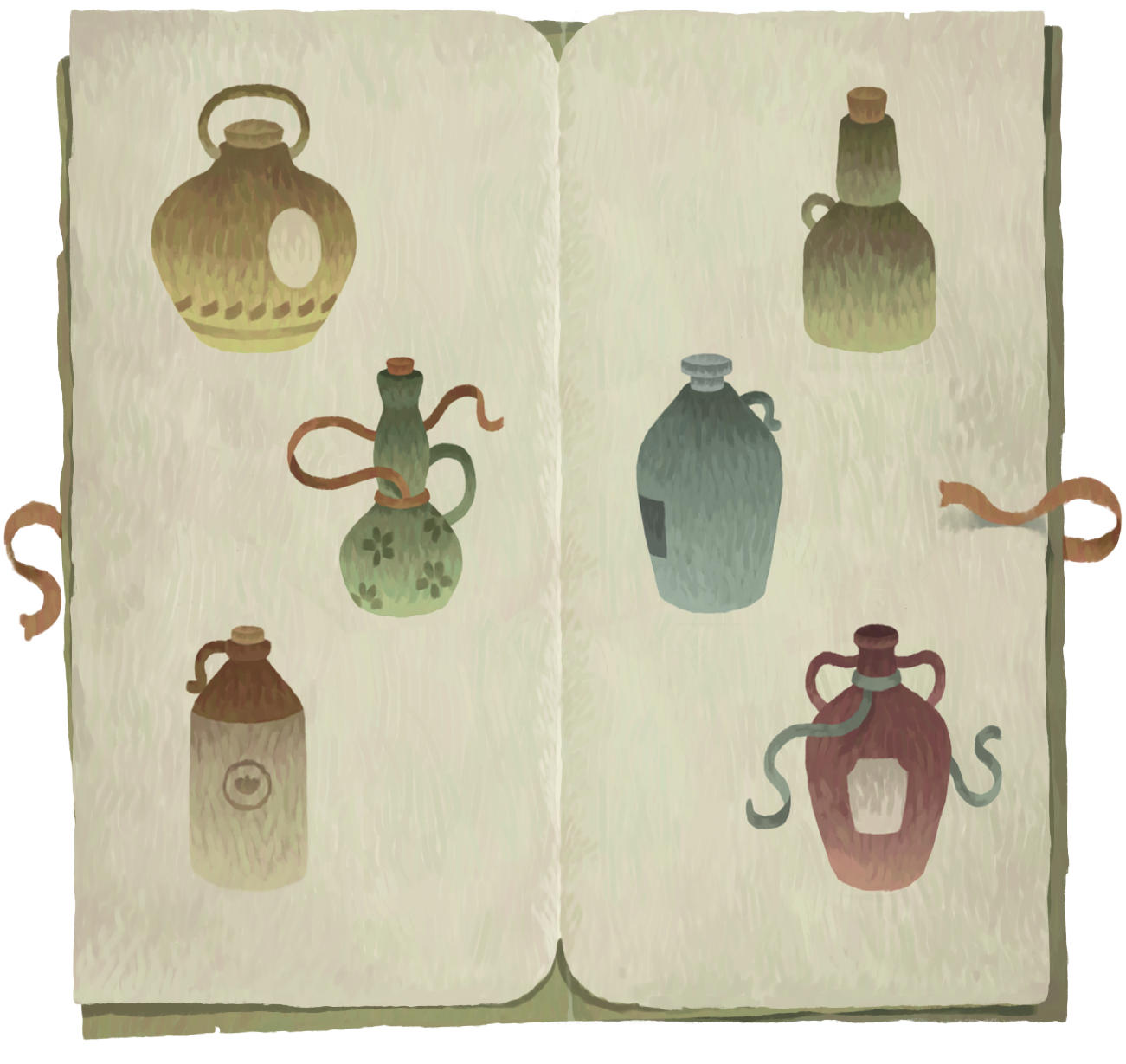


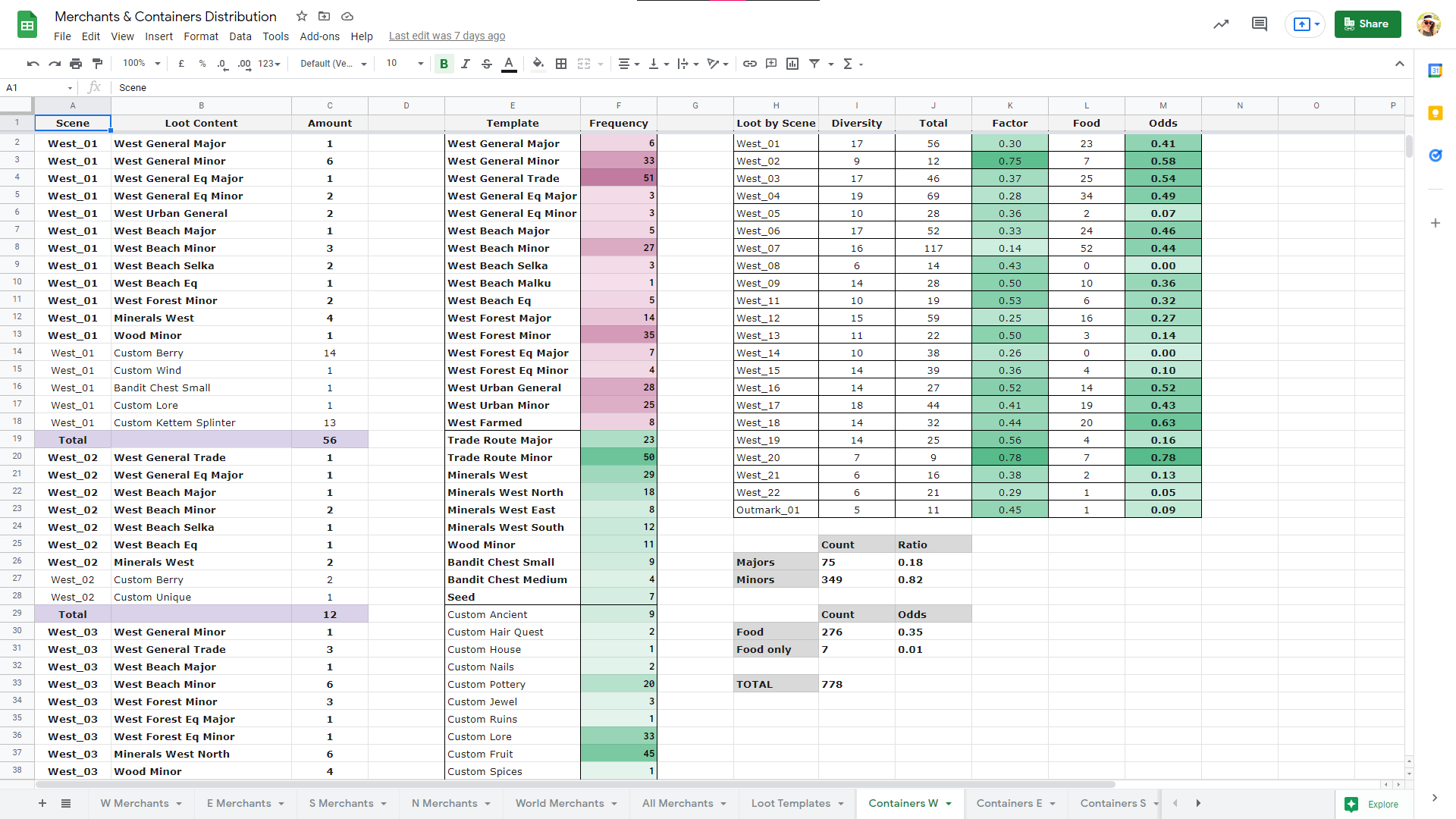

Related to items, I was also responsible for the trading system. In Book of Travels, there is no currency and the economy is trade-based, in which everything has its base value and some traders might be more inclined to value some goods over others. So, for example, a trader from the West is set to give more value to goods from the East and a little more to goods from North and South, as a general rule. Aside from that overarching logic, I have set most traders to have some specific preferences, so that players wishing to roleplay a merchant can figure out how to strike better deals and travel around making profit.
Although I worked with many events and behaviors, creating a few from scratch and polishing others, especially when deadlines were looming close, the lead designer and I divided the event scripting work leaving events with trade interactions under my responsibility. That granted me the freedom to define the content each merchant offered and implement them in a swift process. As we progressed in development I realized that for merchants it was less interesting to use templates, so I gave most of them a custom selection of goods contextually relevant to the roles they were meant to perform.
Sometimes those trade interactions would be the "Static Trade" that is what we considered our quest-like interactions, in which an npc is offering something specific in exchange for another item or a set of items. Scripting them ranged from simple setups in which it was one specific item to give and another to receive, to more complex setups of finding a random event on a specific level while having a specific effect active after your character is above a high level.
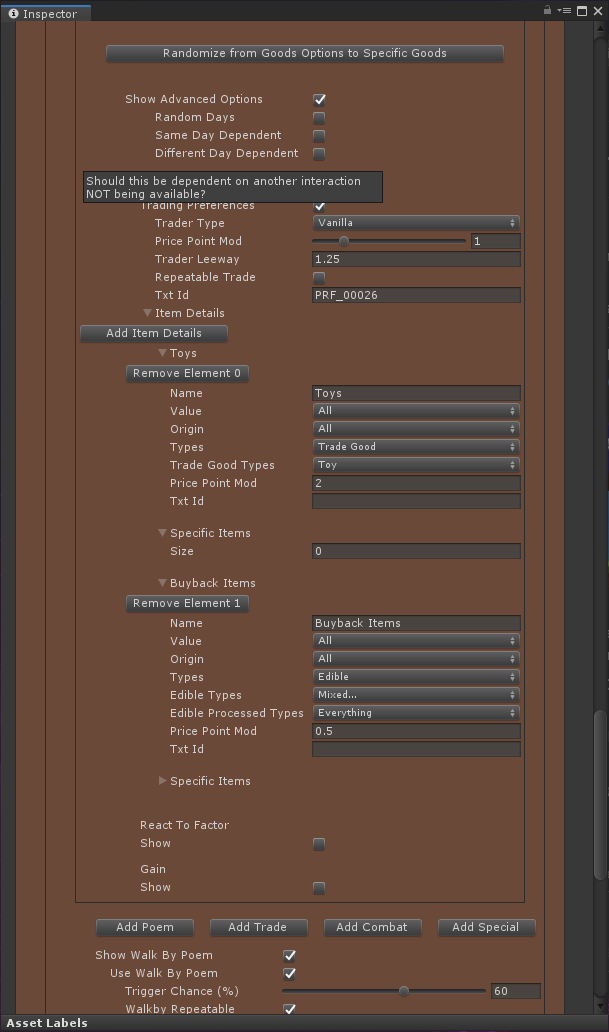

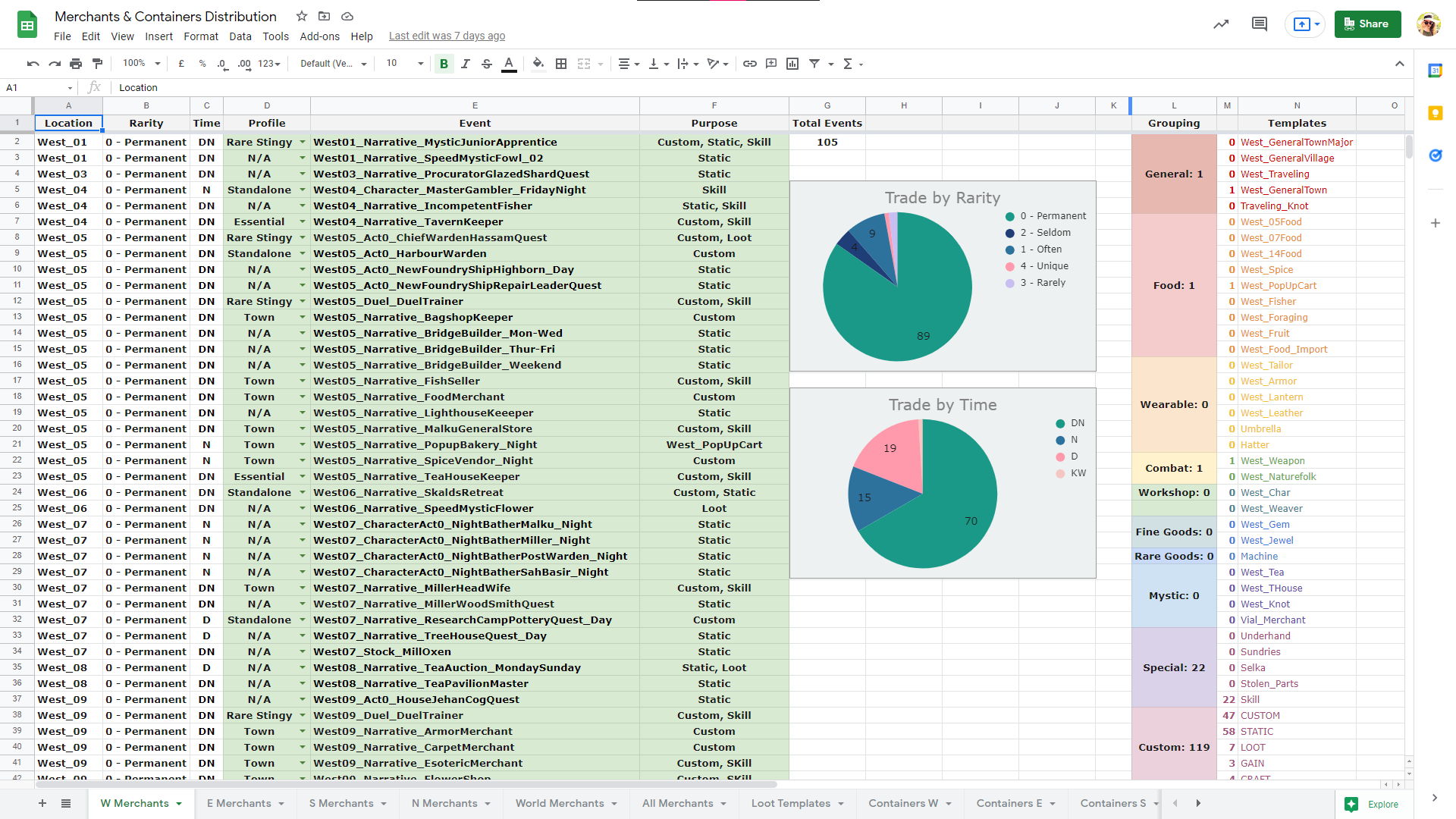

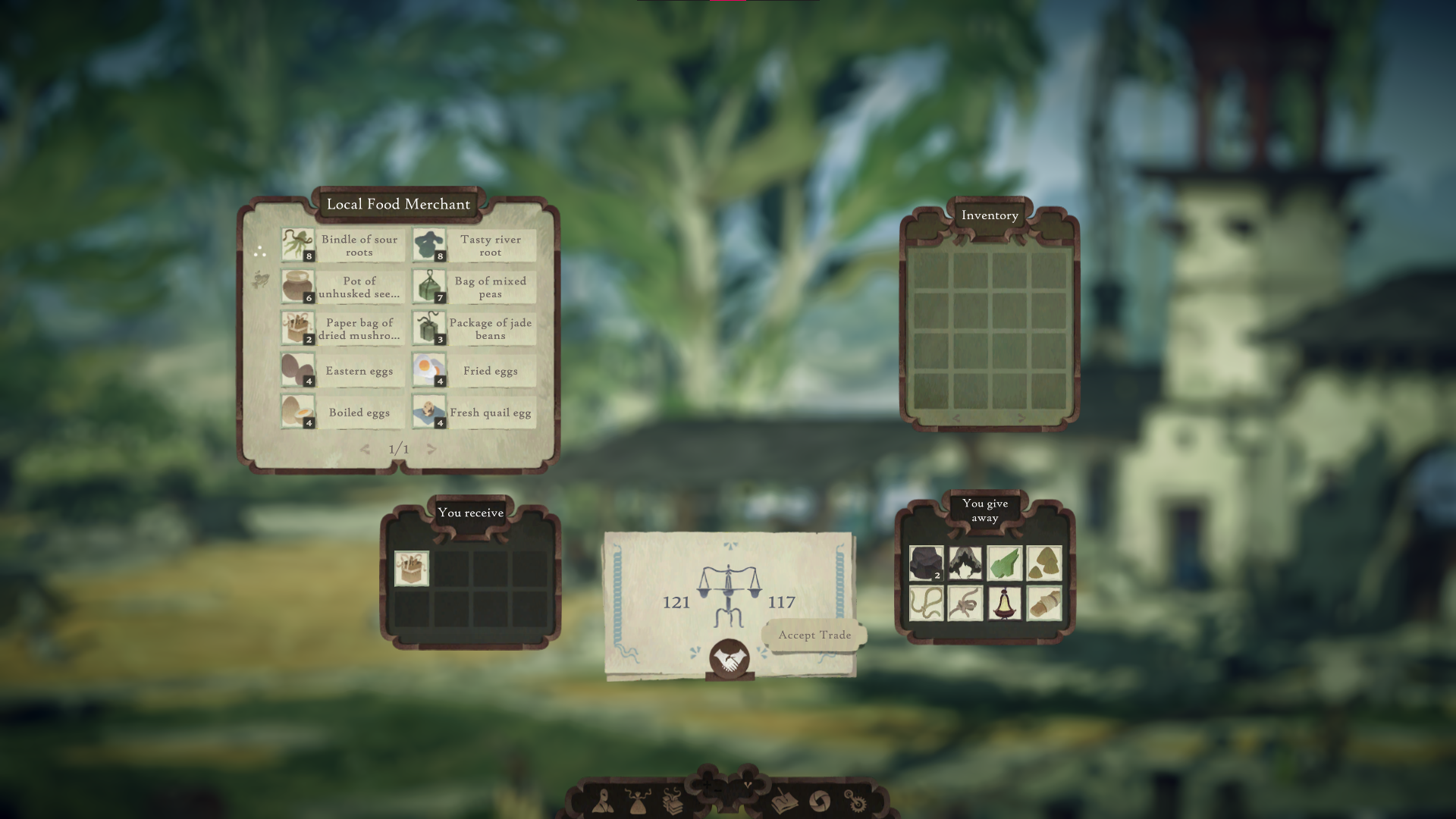
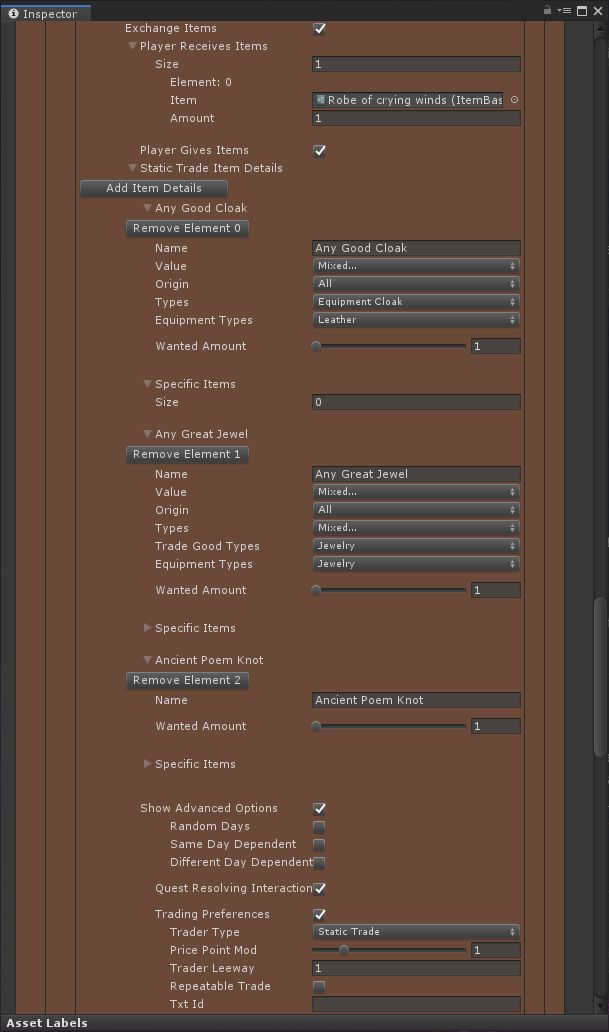
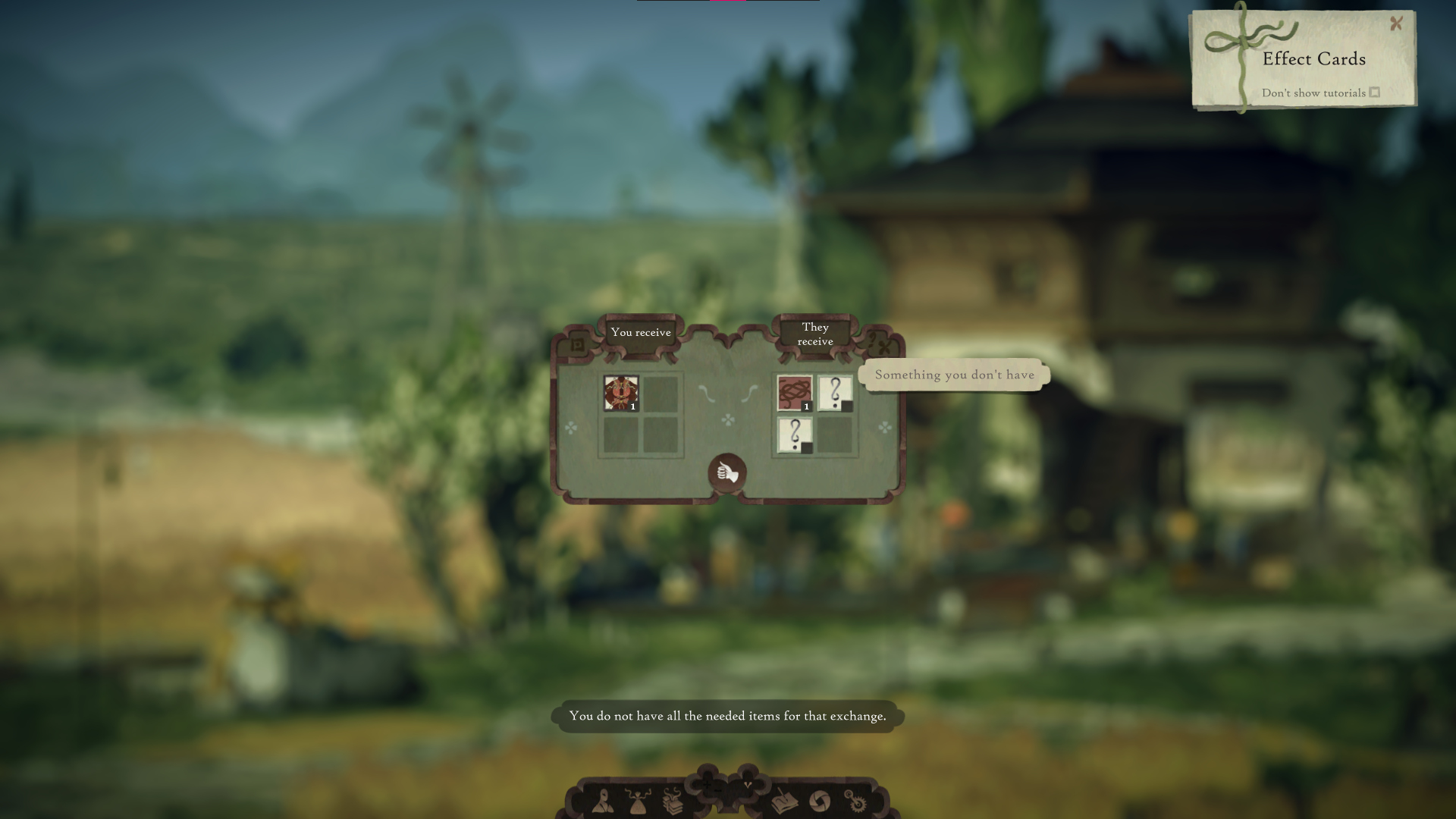
I also had an intimate connection to level design. Although as a whole it was not my responsibility some parts of it were: such as defining which reagents could be found on each level and how many, where they would be found; the same for endeavors and loot.
In the case of reagents, I defined a logic that took the geography of the land into account and created a set of rules where each reagent could be placed. That meant that, although their spawning chance was random, players could learn to identify where each of them is likely to appear. For example, Acorn and Chestnut trees are often found in open fields, while Silk Flower is found in solemn places. I wanted players to have an aesthetic experience similar to what it felt to me, being in Sweden and picking up flowers for a midsommar garland: I knew vaguely where I could find each flower I was after, so I went kind of where I remembered them to be, but I still had to do some searching, and as I did, I found pleasant surprises.
Context was also the name of the game for defining where each endeavor and loot could spawn. To each level, I assigned a range of possible endeavors to be available and they all had some correlation to the land and surroundings, maybe something that happened in the present, maybe something from ancient times. Loot is also custom-tailored to reinforce the narrative around some landmarks, giving more content depth, such as message knots left long ago by the side of a concealed pond.
